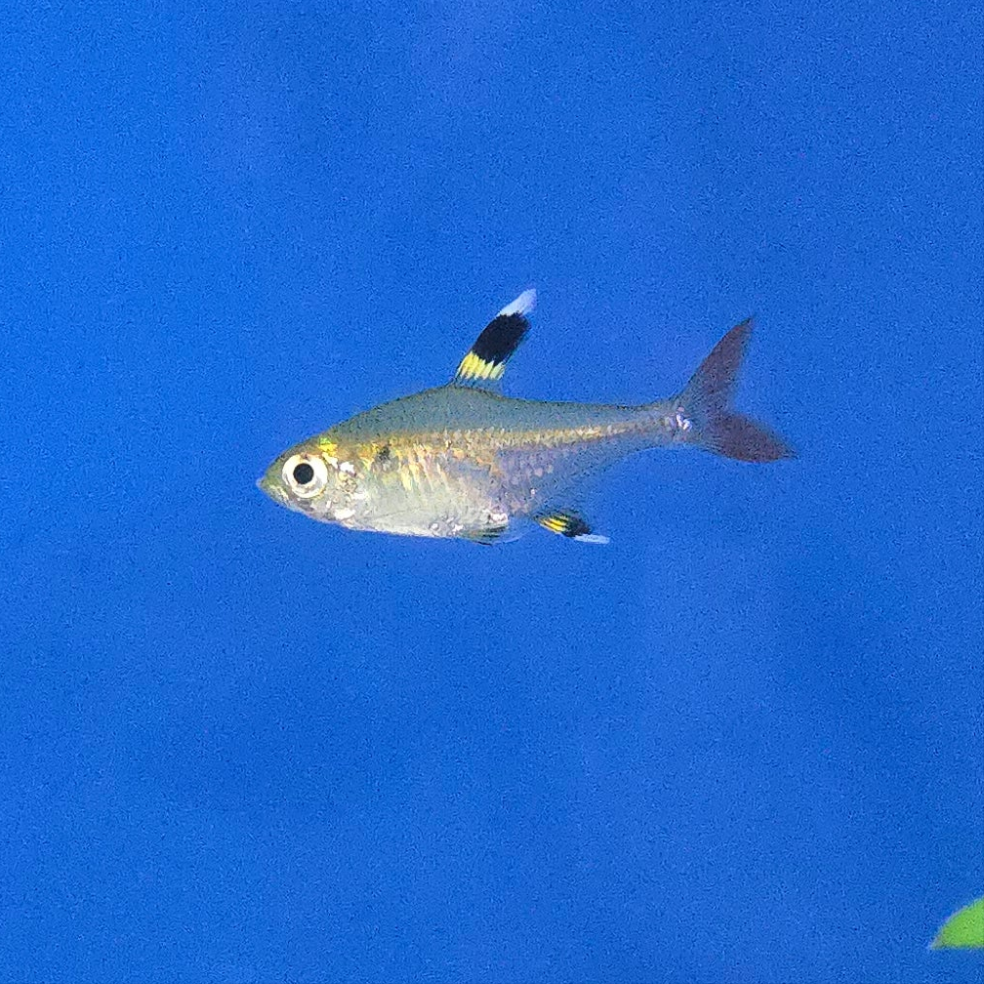Fancy Fish and Aquascapes
X-Ray Tetra ~ Pristella maxillaris
X-Ray Tetra ~ Pristella maxillaris
Couldn't load pickup availability
The X-Ray Tetra, also known as the Golden Pristella Tetra, is a peaceful and hardy freshwater fish named for its translucent body that reveals its internal structure. Native to the coastal rivers and streams of South America, particularly in the Amazon and Orinoco basins, this unique species is a favorite among aquarists for its adaptability, schooling behavior, and subtle beauty.
- Size: 1.5-2 inches
- Lifespan: 4-5 years
- Temperament: Peaceful, social
- Group/Solitary: Best kept in groups of 6+
- Food: Omnivorous; flake food, micro-pellets, live/frozen foods (bloodworms, brine shrimp, daphnia)
- Water Requirements: 72-80°F, pH 6.0-7.5, soft to moderately hard water
Care Instructions
The X-Ray Tetra thrives in slow-moving, densely vegetated waters in its natural habitat, often near coastal areas where salinity can vary. In aquariums, they prefer a setup with live plants, driftwood, and a dark substrate to enhance their subtle colors and provide cover. A tank of at least 15-20 gallons is recommended for a school of six or more, which encourages their natural schooling behavior and reduces stress.
These tetras are omnivores and enjoy a varied diet of high-quality flakes or micro-pellets, supplemented with live or frozen foods such as brine shrimp, bloodworms, or daphnia. A balanced diet helps maintain their health and ensures their colors are vibrant.
X-Ray Tetras are peaceful and compatible with other small, non-aggressive species, such as rasboras, corydoras, and small gouramis. Their translucent bodies and active schooling behavior make them an engaging addition to community tanks. Regular water changes and stable parameters are essential for their long-term health.
Fun Fact: The translucent body of the X-Ray Tetra serves as a natural form of camouflage in the wild, helping it blend into its surroundings and avoid predators in its native habitats. This unique adaptation also gives it its name and makes it a fascinating species to observe in aquariums.
Share


